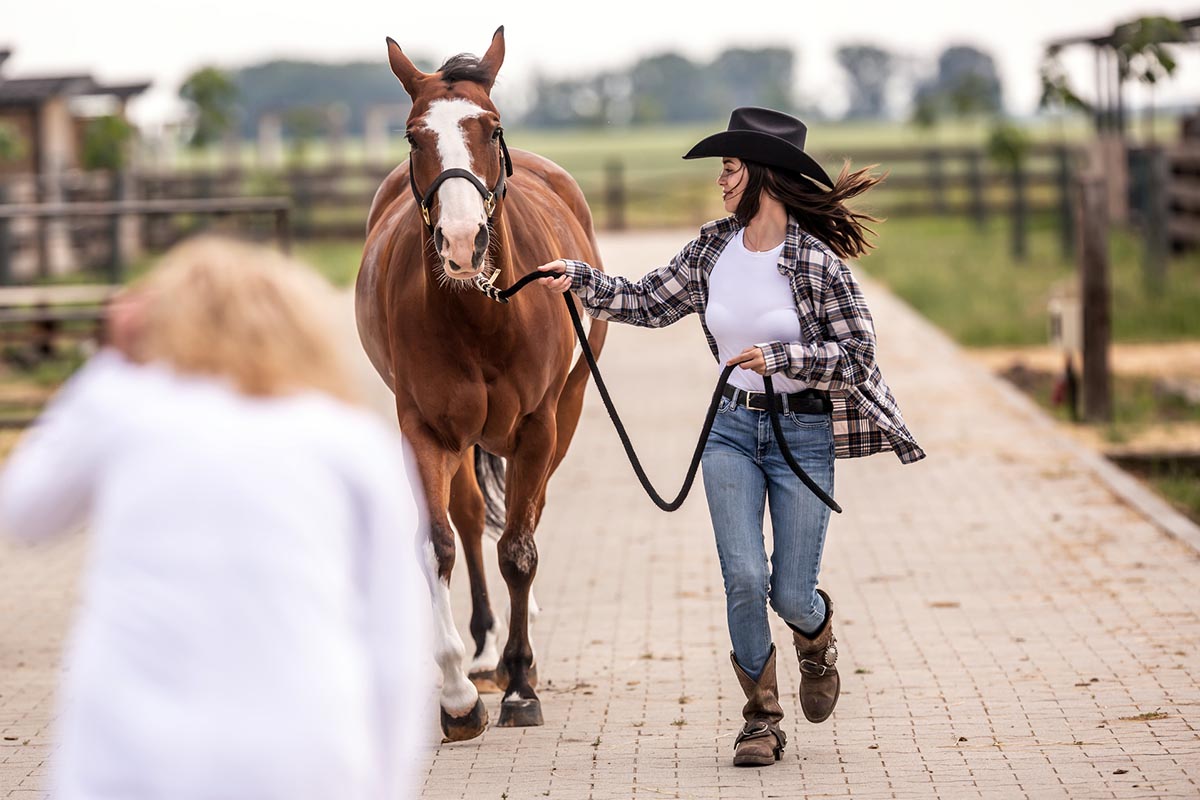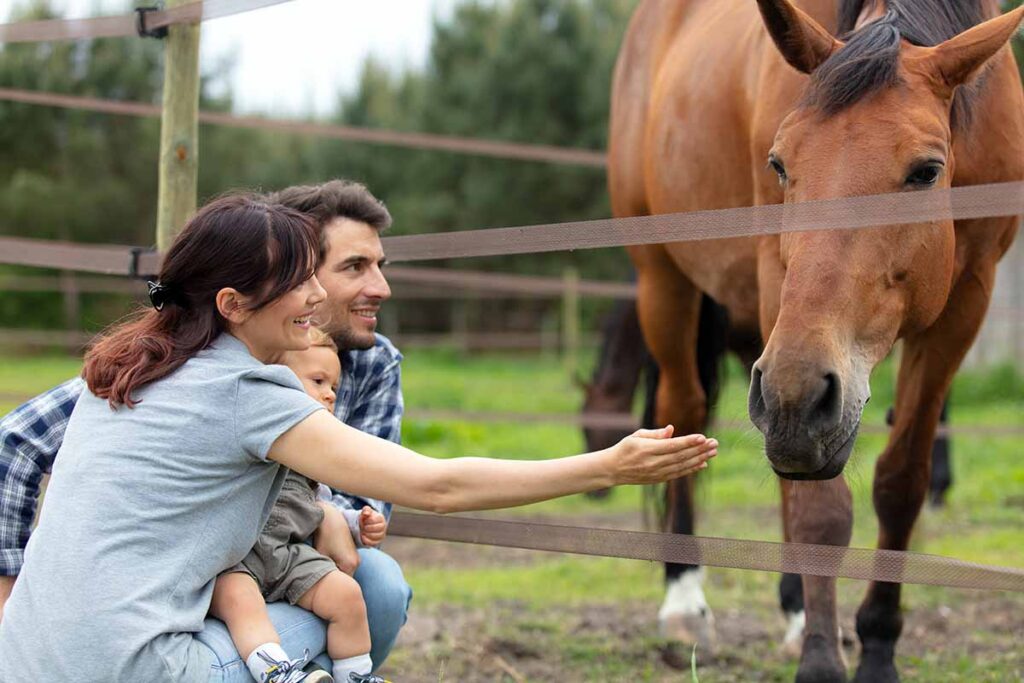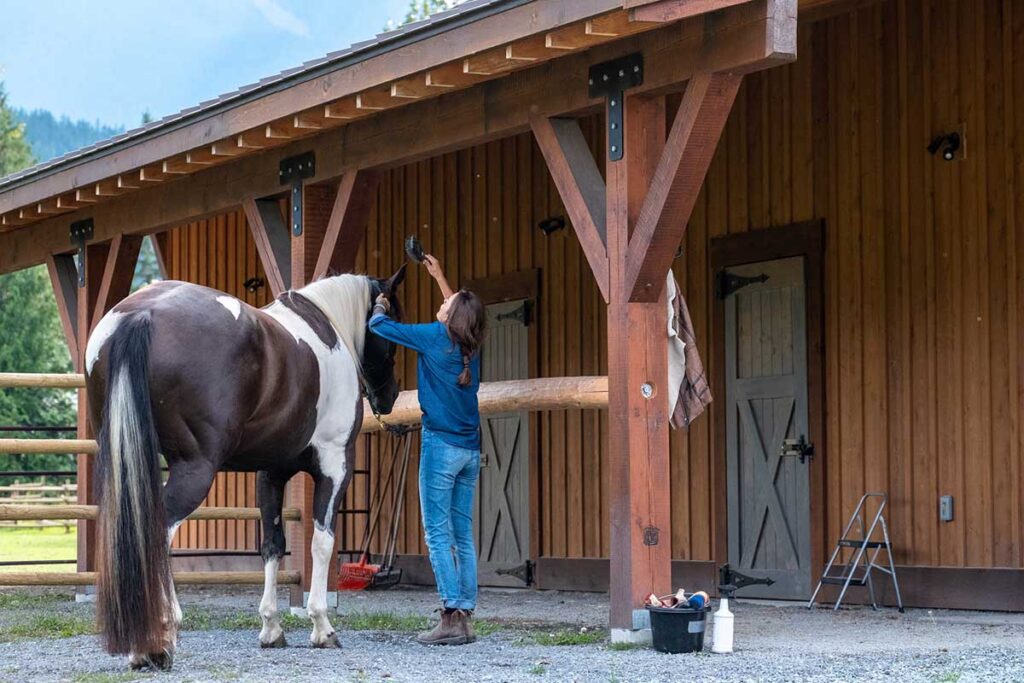Before you get swept up in the excitement of owning your own horse, there’s an all-important step that can make or break your equestrian dreams: the prepurchase exam. During this exam, a veterinarian gives a horse you are considering buying a thorough assessment. They will check for any potential issues you would like to know about before buying the horse. They’ll also make sure your potential partner is healthy, sound, and fit for your riding ambitions.
While it’s not a guarantee your horse won’t have any issues if his prepurchase exam (PPE) findings come back clean, it can help you make an informed decision and give you some peace of mind when making such a big purchase.
When you schedule a prepurchase exam, the vet is going to ask what specific things you want them to evaluate. You might think you should test for everything, but that would be an unnecessary and extremely expensive veterinarian’s visit. Keep reading to get an idea of what you can expect during your prepurchase exam and which tests are worth springing for.
What to Expect During a Prepurchase Exam
Usually, the potential buyer will schedule and cover the expenses of the PPE. If the horse you’re thinking about buying is local to you, it’s possible to use a veterinarian you are familiar with (or find a vet you want to work with going forward). But if you’re looking at a horse outside your area, you’ll have to go with a vet in that location.
PPEs are common requests for equine vets, and each one likely has a standard routine they follow. In most cases, the vet will come to the barn where the horse is located and perform the exam. Depending on the situation, you can choose to be present at the exam or have the vet give you the results after.
Before you call to schedule your exam, it’s a good idea to know what things you want the vet to test for and check. Here are some common prepurchase exam tests you might consider:
Lameness Evaluation
For performance horses, a lameness evaluation is an important part of the PPE. The vet will watch the horse move in-hand at the walk and trot, in a straight line, on a hard, level surface.
They’ll be watching for:
- How the horse’s feet land.
- Alterations in limb movement.
- Abnormalities in the footfalls.
- Obvious signs of lameness, pain, or weight-shifting when the food lands.
- Asymmetry with the way the body or pelvis moves.
Then, the vet will usually watch the horse go both directions in a round pen or on a longe line, which can:
- Highlight a shortness of stride, particularly in the hind end.
- Allow the horse to move more freely at faster speeds than traveling in-hand allows.
- Show the horse’s movement at the canter, including any difficulty picking up a particular lead.
- Demonstrate fluidity (or lack thereof) in transitions.
- Accentuate a lameness, because the circle puts more pressure on the inside legs.
- Uncover potential respiratory issues, such as if a horse makes noise while traveling at speed, gets out of breath easily, or recovers slowly. Plus, the veterinarian will be able to assess the heart and lungs after exercise.
The Flexion Test
Joint flexions are often considered to be one of the central elements of a soundness assessment. During this test, the vet will flex a single leg joint tightly and hold it in place for a set period, usually 30 to 90 seconds. As they release the joint, the handler immediately trots the horse off. Then, the vet will look for any signs of lameness.
Red flags to look for include:
- Resisting the vet holding the limb during flexion.
- Remaining sore for the duration of the exam after being flexed.
It’s important to remember this test has a lot of variability depending on who is performing the flexion. An individual’s strength, how tightly they hold the joint, and even slight variations in how they hold the joint can all affect how the horse reacts to the test.
Soft Tissue Palpation
A typical prepurchase exam also includes thorough palpation of the horse’s soft tissues. Here, the vet is feeling for any evidence of current or past injuries, such as heat, tenderness, or unexpected thickness.
X-Rays of Bones and Joints

Radiographs are probably the most commonly used diagnostic aid in a prepurchase exam. It’s never a bad idea to have a baseline set of X-rays for your new horse. Plus, X-rays will show things like bone chips, potential foot issues, arthritis, and many other possible problems.
Other Tests to Consider
Whether you have a specific reason or you just want to be extra thorough, you can ask for a variety of other tests. An ultrasound can identify tendon or ligament injury and inflammation. A Coggins test and a standard wellness profile are common blood tests done during a PPE. These screen for organ function and overall health. Drug testing can also be done during a PPE blood test. You can ask your vet to test for many other things, but the ones listed above are a good place to start.
Prepurchase Exam Costs
The cost of a prepurchase exam varies depending on the location, veterinary practice, and tests you request. On average, however, you can expect a very basic PPE to cost between $250 and $500. At the high end, if you’re ordering extensive X-rays, blood tests, and other diagnostics, you might find yourself paying a couple of thousand dollars for the peace of mind a thorough prepurchase exam provides. Ask the veterinarian up front what they charge for PPEs and how long the visit will take. This will help you avoid any surprises.
Take-Home Message
Preparing yourself in advance means you’ll go into the PPE knowing what to expect. Start with an idea of what you’re willing to deal with as a horse owner. Prepurchase exams are rarely perfect and not intended to “pass” or “fail” a horse. Always have an in-depth conversation with your vet about the results, any concerns, and questions you might have. Once you fully understand the results of the PPE, you’ll be able to make an informed decision about your dream horse.








